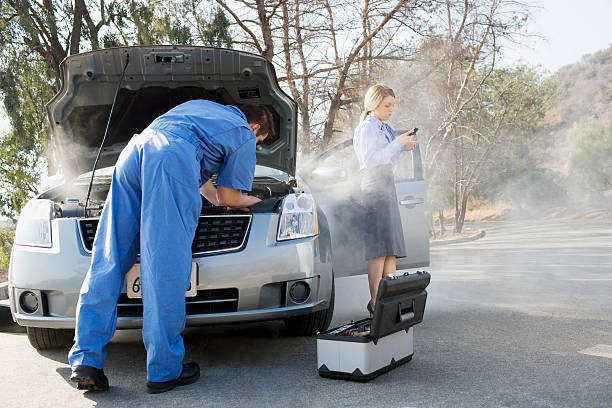
Browse our handpicked selection of vehicles that currently carry a very favorable book value in relation to where they are priced.
If you are looking for a vehicle that could help relieve some negative equity pain in your current vehicle, these selections could help get you on your way.
Maybe you just want to make a great buy and purchase a vehicle priced well under current book value. Taylor's AutoMax is here to help! Click here!
Sincerely,
Your Taylor's Auto Max Team

Today’s cars have sophisticated cooling systems equipped with multiple heat sensors and computer-controlled electric fans designed to keep your engine running in any weather. But overheating can still happen. Continue reading on to learn the best ways to prevent an overheated car and steps you can take in the event that your car begins to run hot.
Why do engines overheat and how can I avoid it?

Engines overheat for many reasons. Generally, cars overheat because of a problem with the cooling system that doesn’t allow heat to leave the engine compartment. This is often due to a leak or blockage somewhere in the engine cooling system or other components. Other sources may be from a faulty or broken water pump or radiator fan, or from a clogged coolant hose.
Components like rubber hoses, gaskets, and water pumps can spring a leak with regular wear and tear. Certain driving conditions, like stop-and-go traffic on a hot day, can put significant stress on the cooling system, causing it to fail. Fortunately, you can usually avoid this problem with regular maintenance by a certified mechanic, who will check your car’s coolant and oil levels and inspect hoses, fans, the thermostat, and other parts in the cooling system.
Signs your Engine is Overheating

If you’re able to take steps to cool your engine before it overheats to the point of failing, you may reduce the risk of irreversible engine damage. But first, you’ve got to notice the symptoms of overheating, which can include:
- Steam (which can look like smoke) coming from under the car hood.
- An engine temperature gauge on your dashboard that spikes to “H” or into the red. (Engine temperature gauge symbols vary, so consult your owner’s manual.)
- A strange smell coming from the engine area. For example, leaking coolant can smell sweet while leaking oil might smell more burnt.
- An illuminated “Check Engine” or “Temperature” light on your instrument cluster.
As soon as you notice the engine overheating, take the following steps and contact your nearest repair shop.
What to do When your Engine Overheats:
1. Kill the A/C and Crank the Heat

Immediately turn off the air conditioner to reduce stress on the engine. Then, turn the dial to maximum heat. This can help pull heat away from the engine to keep it from overheating until you can pull over in a safe location. You may get a little hot yourself, but a few minutes of discomfort is a small price to pay compared to major engine repairs.
2. Find a Good Place to Pull Over

Pull over and shut off the car. Allow the engine to cool for at least 15 minutes. Keep an eye on the temperature gauge, as it should move back to a normal range as the engine cools.
While you’re waiting (and watching the gauge), put together a plan to get your overheated engine checked out. Call a friend, a tow truck, or your local roadside assistance for help.
3. Wait

If you don’t have roadside assistance, be patient; it will take at least 15 minutes for the engine to cool. In the meantime, do not attempt to open the hood; the coolant in a car that has overheated may be in excess of 230 degrees. Once the hood is open, there’s a risk of being sprayed with hot water or steam.
4. Check Coolant

If your coolant level is low, a quick top-off could help protect your engine and prevent overheating until you can get things fixed. However, this step won’t do much good if a coolant hose is clogged or the source of your troubles is a broken radiator fan or water pump. Consult your owner’s manual to find the location of your coolant reservoir tank and to learn how to add coolant to your vehicle.
5. Get to a Service Station

Adding coolant does nothing to address the problem that caused your engine to overheat in the first place, but it often allows you to drive safely to the nearest repair station. So if your car isn’t being towed, now’s the time to carefully restart your engine and drive to your nearest auto repair shop. Keep an eye on the temperature gauge as you drive. If it rises again, pull over and let the system cool. Take notice of everything, like fluid under the car or steam under the hood.
What NOT to do When your Engine Overheats
1. Don’t Panic

Your engine isn’t keeping its cool, but you can! Avoid swerving through traffic or slamming on your brakes when pulling off the road. Drive carefully until you find a safe place to pull over.
2. Don’t Keep Driving

If your engine is overheating but still running, you’re not doing it any favors by staying on the road. Sure, you may be able to get to your destination before it gives out entirely, but you may cause significant (and costly) damage by pushing your engine too far.
3. Don’t Open the Hood Immediately

Once you’ve pulled over, wait for the engine to cool before popping the hood to check things out. Opening the hood immediately can put you at risk of burns or injuries from spewing steam or smoke. Patience is key. Wait until the engine temperature gauge settles before opening the hood.
4. Don’t Let the Issue Linger

An overheating engine won’t resolve on its own, even if it seems to be fixed after you add a little coolant. It will only get worse if left unaddressed. Get to the root of the issue to help save your engine and your wallet.
How to Prevent an Overheated Engine

Take care of your car, and it’ll take care of you. The best way to prevent an overheating car engine is to have regular coolant flushes and exchanges performed on your car, and stay up-to-date with radiator maintenance as recommended by your vehicle manufacturer. Routine inspections can also help you fix any potential radiator or engine issues before they worsen.
Checking Coolant Yourself

You can check your engine’s coolant yourself! It’s a good idea to do this every few months, or before you hit the road for a long trip. Knowing how to complete this simple task is almost as important as knowing what to do when your car overheats.
- Release the hood.
- Find the radiator reservoir (usually a white tank).
- Visually inspect the level on the side of the reservoir. The level should be between the “low” and the “full” marks.
- If it’s beneath the “low” mark, allow your engine to cool down and add more coolant. Check your owner’s manual for the correct fluid. Use a funnel to prevent spills on the engine (or just bring your car to a nearby service station location and ask them to do it for you).








